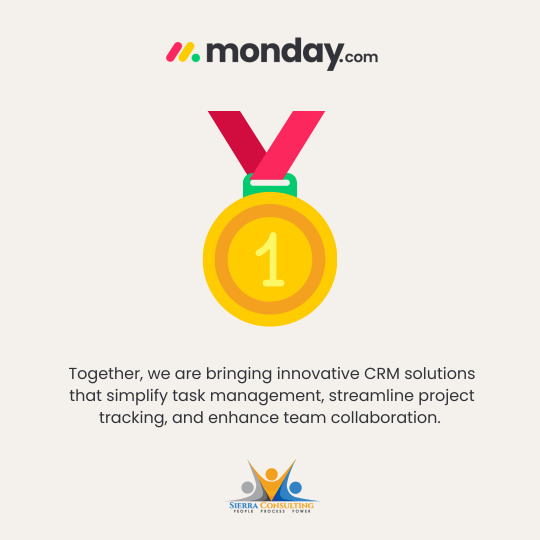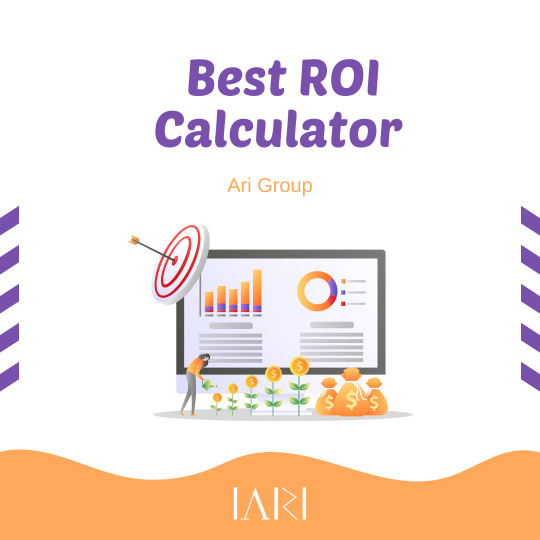#ROI (Return on Investment):
Explore tagged Tumblr posts
Note
Hi bitches! I signed up for Acorns like y'all recommended, and I saw that if you join Survey Junkie, Acorns will invest $10 when you earn and redeem at least 500 points. (screenshot below)

Is Survey Junkie legit? Is it a smart way to earn some extra $/gift cards? I've been very wary of websites like this, so I'd love to know what y'all think!
Thanks for asking, my dove!
Our position on sites like Survey Junkie is that the ROI (return on investment) is so low as to be not worth it. The amount of money you can make on Survey Junkie in exchange for your time is pathetic. We'd rather you spend that time on endeavors that will make you a much higher ROI.
That said... if you're bored on the train or waiting in line and you want to make a couple dollars while you'd otherwise be doing nothing, then try it out! Let us know how it goes.
And for anyone interested in Acorns, this is our affiliate link.
Romanticizing the Side Hustle: When 1 Job Isn't Enough
How To Start Small by Saving Small
If this helped you, give us a tip!
24 notes
·
View notes
Text
The Influence of Social Media Management on Business Success

Introduction In the fast-paced digital age, social media has evolved into a powerful tool that has revolutionized how businesses communicate with their target audiences. Because of the billions of consumers actively using various platforms, social media provides businesses with a unique opportunity to boost brand awareness, engage with customers, and eventually lead to commercial success. In this post, we'll discuss the importance of social media management and how it may have a significant impact on your company's growth and profitability.
Creating a Powerful Brand Presence Creating and maintaining a strong online brand presence is heavily reliant on good social media management. Having a consistent tone of voice in your postings and selecting a suitable profile photograph are both crucial parts of consistency across all social media networks. By picking fascinating and relevant material, you can effectively communicate your brand's beliefs and personality. This will facilitate communication with your target audience in relation to your firm.
Getting to Know Your Audience Social media(s) is a two-way communication medium(c) that allows businesses to communicate directly with their target audience. Responding to comments, emails, and mentions as soon as possible creates customer trust and humanizes your company. Using social media management solutions allows you to monitor brand-related conversations and respond to both positive and negative customer feedback fast.
Creating Shareable Content Creating Shareable Content is an important part of good social media management. If you develop content that informs, entertains, or assists your audience with a problem, your brand's reach and visibility will grow. Publishing high-quality content on a regular basis cultivates a dedicated audience and identifies your firm as a thought leader in your industry.
Using Influencers Influencer marketing is now a powerful tool for controlling social media. By engaging with influencers who share your brand's values, you can reach a wide range of new, highly targeted consumers. Influencers have the ability to give genuine material that connects with their audience, allowing your firm the opportunity to increase sales and brand exposure.

Tracking and Analyzing Performance Social media management requires more than just publishing content. Your social media campaigns must be monitored and evaluated. With social media analytics tools, you can track key metrics such as reach, engagement, and conversion rates. With this data-driven process, you can evaluate what most appeals to your audience and make data-supported decisions to optimize your social media strategy.
Maintaining a Competitive Advantage Maintaining a good social media presence may help you obtain an advantage in today's competitive environment. It allows you to maintain a close check on your competitors, understand their strategies, and identify openings for your company to fill. By handling social media with originality and proactivity, you may establish your brand as a leader in your industry.
Increasing Website Traffic and Conversions Social media networks can be efficient distribution channels for attracting new visitors to your website and converting them into paying clients. Include clear and effective calls-to-action in your social media messages to entice followers to visit your website, subscribe to your newsletter, or make a purchase. Strategically placed connections and enticing incentives can both significantly improve traffic to your website and total ROI.
Conclusion Finally, social media management is an essential component of any good digital marketing strategy. By effectively managing your social media presence, you can build a strong brand, engage with your audience, provide interesting content, employ influencer marketing, analyze performance, outperform competitors, and enhance website traffic and conversions.
#Digital marketing#social media marketing#website services#amazon seller services#Search engine optimization#e-commerce marketing#email marketing#Social media advertisement#Social media management#website development#website management#website hosting#pay-per-click#ROI – Return on Investment
6 notes
·
View notes
Text
Apa Itu ROI? Pengertian, Fungsi, dan Cara Menghitungnya
#Topbisnisonline – #Apa Itu ROI? Pengertian, Fungsi, dan Cara Menghitungnya – Dalam #dunia bisnis dan #investasi, istilah ROI atau #Return on Investment adalah salah satu istilah yang sangat sering digunakan. ROI menjadi tolok ukur penting dalam menilai seberapa efektif sebuah investasi atau kegiatan bisnis dalam menghasilkan keuntungan. Lalu, sebenarnya apa itu ROI? Mengapa penting untuk…
#Apa Itu ROI#Dunia Bisnis#Informasi#Investasi#Investor#Keuangan#Manajemen Keuangan#Return on Investment#Seputar Bisnis#Strategi Bisnis#Tips#Tips Investasi
0 notes
Text
Indian MSMEs suffer from stunted growth because of inefficient processes and lack of clear-cut strategy. Performance Consulting reverses this reality on its head through systematic interventions: boosted sales targeting, streamlined operations, and strategic alignment. D&V Business Consulting facilitates MSMEs to shift from reactive to proactive, generating outcomes such as increased profitability, improved quality, and stability in the long run. ROI is not merely financial — it's organizational agility and future-proofing.
#1. MSME Performance Improvement#2. Return on Investment (ROI) for MSMEs#3. Performance Consulting Benefits#4. Quantifying Business Value#5. Small Business Growth Strategies#6. Business Performance Metrics#7. Improvement ROI Calculation#8. MSME Consulting Services#9. Business Value of Consulting#10. Performance Improvement ROI
0 notes
Text
Expected ROI from Wow Momo Franchise in 2025
The Quick Service Restaurant (QSR) industry in India is flourishing, with rising demand for fast, affordable, and hygienic food options. Among the leaders of this space is Wow Momo, a brand that turned the traditional momo into a successful business model. For aspiring franchisees, a crucial question remains: what is the expected Return on Investment (ROI) in 2025, and does the Wow Momo franchise cost justify the profits? Let’s dive into the financial metrics, growth forecasts, and revenue potential to understand the expected ROI from a Wow Momo franchise in the coming year.

Franchise Cost Overview
Before diving into profits, understanding the investment is vital. Here’s the approximate Wow Momo franchise cost in 2025:
Franchise Fee: ₹10–12 lakhs
Interior & Kitchen Setup: ₹20–25 lakhs
Initial Inventory: ₹2 lakhs
Marketing & Branding: ₹1–2 lakhs
Miscellaneous Expenses: ₹2–3 lakhs
Total Investment: ₹35–45 lakhs
This cost may vary based on location (mall, high street, food court, or standalone kiosk) and city category (Tier 1 vs Tier 2).
Monthly Revenue & Expenses
Once the store is operational, monthly income and expenses are influenced by footfall, location, and operating efficiency.
Estimated Monthly Revenue:
Tier 1 City: ₹15–18 lakhs
Tier 2 City: ₹8–12 lakhs
Operating Expenses:
Staff Salaries: ₹2–3 lakhs
Rent: ₹1.5–4 lakhs
Inventory Refill: ₹3–5 lakhs
Utilities, Maintenance & Misc: ₹1 lakh
Royalty Charges:
7–8% of gross revenue to Wow Momo
Expected ROI in 2025
With a focus on expansion and customer satisfaction, Wow Momo is targeting higher profitability per outlet in 2025.
Tier 1 ROI Estimate:
Net Profit Margin: 20–25%
Break-even Point: 12–16 months
Annual Profit: ₹20–25 lakhs
Tier 2 ROI Estimate:
Net Profit Margin: 22–28%
Break-even Point: 16–20 months
Annual Profit: ₹15–18 lakhs
These figures depend on the franchisee’s management capabilities and local demand.
Factors That Influence ROI
Location Quality High-traffic malls and IT hubs yield better visibility and faster customer acquisition.
Marketing Strategies Local promotions, social media, and collaborations with delivery platforms like Swiggy and Zomato increase reach.
Operational Efficiency Managing food waste, inventory, and staff productivity directly impacts bottom-line profits.
Customer Retention Loyal customers returning for quality and variety increase recurring revenue.
Franchise Support from Wow Momo
Wow Momo provides solid backend support which includes:
Centralized supply chain
Standardized branding and promotions
Menu innovation & training programs
POS system integration
These supports help maintain quality while reducing startup headaches, indirectly contributing to a better ROI.
Conclusion
Investing in a Wow Momo franchise in 2025 holds strong potential for sustainable profits and brand growth. While the Wow Momo franchise cost may appear high at the outset, the brand’s market presence, product innovation, and streamlined operational support contribute to a healthy ROI. Whether you choose a prime Tier 1 location or a strategic Tier 2 city, with proper execution and customer engagement, you can expect to see your investment returned within 1.5 years, followed by consistent profits. In the competitive food franchise segment, Wow Momo continues to offer an appealing opportunity for investors seeking long-term value.
#wow momo franchise cost#wow momo profit margin#wow momo ROI 2025#food franchise return#momo business investment
0 notes
Text
Why Building a New Home Is a Smart Investment—Even If You're Not Selling Soon
At Mbogo Real Estate Core International, we believe that investing in a new home construction is one of the smartest decisions a property owner can make—whether you’re planning to sell in the near future or stay for generations. Many homeowners underestimate the value of building a new house with durable materials and quality finishes, but the long-term rewards speak for themselves. Here’s why…
#Building a New Home#Dream Home Uganda#finance#Higher Return on Investment (ROI)#House for Sale Uganda#Increased Property Value Over Time#investing#investing in a new home#investment#Kenya#Modern Design and Functionality#Nairobi#Property for Sale#Real Estate#Real Estate Uganda#realtor#Renovation#Residential Property#Smart Investment#Tanzania
0 notes
Text
Digital Marketing ROI: From Clicks to Causality - A Strategic Approach to Measuring Success

In today's fast-paced digital world, marketing budgets are increasingly being funneled into digital channels, making digital marketing a crucial engine for growth. With more consumers online than ever before, the opportunity to reach a vast, digitally-savvy audience has never been greater. But as brands pour resources into digital strategies, a fundamental challenge remains: how do you measure the return on investment (ROI)?
At first glance, digital channels may seem easier to invest in compared to traditional methods, but proving ROI—especially across the full marketing funnel—is no small feat. Factors such as brand awareness or recall often don't translate into immediate conversions, adding complexity to the equation. So, what truly drives a consumer to take action? Did your ad cause the desired result, or would the same action have occurred organically?
Understanding this key question of "incrementality" is essential for effective measurement, but achieving clarity is no simple task. The reality is that measuring digital marketing ROI can be visualized as a funnel, where the methodologies become progressively more complex as you move downward—requiring greater data, analytical expertise, and investment.
Let’s explore the different approaches for measuring the ROI of digital marketing efforts.
Attribution: From Last Touch to Multi-Touch The simplest method for tracking ROI is last-touch attribution, which assigns full credit for a conversion to the last interaction before the conversion takes place. While easy to implement, this method fails to consider the multiple touchpoints that influence the customer journey.
Enter multi-touch attribution (MTA). MTA seeks to provide a more holistic view by distributing credit across various touchpoints. This method leverages granular user data—such as cookies, device IDs, and timestamps—to track the full customer journey. However, it comes with its own set of challenges. The growing concerns over privacy and cookie deprecation complicate the data landscape, and MTA is often prone to bias, where correlation is mistakenly assumed to be causation.
Marketing Mix Modeling: A Broader Approach To supplement attribution, Marketing Mix Modeling (MMM) provides a macro-level view of marketing effectiveness. By leveraging aggregated data—often at the geographic or weekly level—MMM helps estimate the overall impact of marketing efforts on sales. It captures both online and offline media, making it a valuable tool for long-term planning and budget optimization. However, MMM doesn’t dive deep into short-term, tactical optimizations and can be influenced by model assumptions and data quality.
Experimentation & Causal Inference: The Gold Standard Randomized Control Trials (RCTs) remain the gold standard in measuring the incremental impact of digital marketing. By isolating the effect of a marketing campaign between a treatment group (exposed to the campaign) and a control group (not exposed), RCTs allow for the measurement of true causality.
While effective, conducting RCTs at scale presents its own challenges—such as exposure bias and the difficulty of managing large sample sizes. Solutions like ghost ads—ads that appear as real but promote unrelated content—can mitigate these issues. However, implementing RCTs requires robust data infrastructure and analytical expertise, making it a challenge for many organizations.
Upper Funnel Metrics: Brand Awareness and Consideration While much of the focus in marketing ROI centers around conversions, upper funnel metrics like brand awareness, consideration, and recall are just as crucial for long-term growth. These softer metrics—although harder to measure—play an integral role in shaping consumer perceptions and driving future sales.
Surveys and brand lift studies are primary tools for gauging these upper funnel indicators. Randomized control designs and longitudinal studies can help capture shifts in consumer attitudes and brand health over time. While these methods provide valuable insights, challenges such as sampling variability and linking survey responses to actual exposure persist.
The Future of Digital Marketing Measurement: A Unified Approach Ultimately, no single measurement approach can provide all the answers. The key to success lies in integrating multiple strategies—attribution, experimentation, modeling, surveys—into a unified measurement strategy tailored to your business goals, campaign needs, and data maturity.
The future of digital marketing ROI measurement will rely on a balanced approach. Success comes from using the right methods at the right time, validating results without unnecessary complexity, and continuously building on insights. As machine learning advances, it will help surface patterns and automate certain processes, but human expertise will continue to be crucial.
The complexity of digital marketing ROI measurement is real—but the opportunity to unlock meaningful insights and drive business growth is equally significant.
By leveraging a comprehensive, multi-faceted approach, brands can gain a deeper understanding of the true impact of their digital marketing efforts. The path forward requires the right mix of tools, expertise, and patience, but the rewards are clear: clearer insights, smarter strategies, and, ultimately, better ROI.
0 notes
Text
AI-enhanced ROI strategies for investing in Stock Markets

AI is becoming omnipresent in the current investing scenario. Morewins LLC can assist traders in getting the ROI on their investments. AI-enhanced ROI strategies give data-driven outcomes and understand the markets better. MoreWins helps in identifying the core problems and offers answers to rudimentary questions such as How to Trade? AI solutions could help investors measure the results and calculate the risks and profits involved in investing. An ROI distribution platform could give Gross, Net, and cash ROI.
For more info tap here : https://www.scribd.com/document/857433291/AI-enhanced-ROI-strategies-for-investing-in-Stock-Markets
0 notes
Text

Discover how Portfolio Management Services (PMS) can enhance your SIP returns through expert strategies, tailored investments, and smarter diversification.
#SIP returns boost#Smart SIP plans#Wealth growth SIP#PMS in SIP#Invest smartly#Portfolio tips#Rate of return#Smart investing#SIP strategy#Expert portfolio#ROI increase#SIP benefits#Managed SIP#SIP guidance#Financial growth#Return on SIP#PMS advantage#Strategic SIP#Money management#High ROI SIP
0 notes
Video
youtube
Captain ROI (Return on Investment) Coming Soon
0 notes
Text
youtube
✨ Explore how Teeny Beans empowers entrepreneurs to build successful, tech-enabled preschools while maximizing their ROI 📈. In this video, we break down key components driving profitability, including our non-franchise, zero-royalty model 🛡️, globally benchmarked curriculums 🌍, and integrated learning solutions 🎒. Discover, how smart classrooms 💻, teacher training 🧑🏫, and ongoing business support help partners achieve sustainable growth 🚀 and make a positive impact. Whether you're a new entrepreneur or an experienced educator, unlock the financial potential of a Teeny Beans preschool today! 🎓💡
#youtube#preschool#openapreschool#preschool franchise#return on investment#preschool curriculum#maximizing ROI
0 notes
Text

Partnering with Monday.com offers businesses a smarter approach to CRM management. You can design and implement CRM solutions that enhance operational efficiency and productivity through its versatile platform. Whether it’s strengthening customer engagement, optimizing sales strategies, or improving internal collaboration, this partnership allows you to create tailored CRM solutions that align with each client’s specific needs.
#Monday CRM#CRM software#customer relationship management#CRM solutions#CRM platform#customer management#sales crm software#crm system monday#best CRM for small businesses#CRM tools#Sales CRM#it#it jobs#technology#tech#current events#technews#crm benefits#crm services#sierra consulting#crm#business growth#business partners#business tools#business analytics#small business#roi#return on investment#crm solution#crm strategy
0 notes
Text
Best ROI Calculator - Ari Group

Finding the best ROI calculator is essential for businesses and investors aiming to maximize their returns.
A top-notch ROI calculator provides accurate, easy-to-understand results, helping you make informed financial decisions.
Look for features such as customizable inputs, detailed breakdowns, and comparison tools.
The best calculators also offer user-friendly interfaces and mobile compatibility, ensuring you can calculate returns on the go.
Whether you're assessing marketing campaigns, investments, or project outcomes, a reliable ROI calculator can save time and enhance your strategic planning.
Choose one that aligns with your specific needs to optimize your financial performance and achieve better results.
1 note
·
View note
Text
#ROI calculation#Digital marketing ROI#Business ROI#Marketing campaign performance#Marketing metrics#Customer acquisition cost#Return on investment analysis#Marketing cost vs revenue#Digital marketing performance measurement#ROI for businesses
1 note
·
View note
Text
youtube
1 note
·
View note
Text
Measuring Success: How Campaigns Drive Profit and Generate Cash Cows
In the world of marketing, understanding return on investment (ROI) is critical to crafting successful campaigns that contribute to your bottom line. As marketing evolves, so must the ways we evaluate its effectiveness. The shift to digital, the rise of automation, and the demand for personalized experiences have changed how businesses assess the impact of their efforts. In this post, we dive into the ROI-volution—how evaluating campaigns is key to uncovering "cash cows" that drive sustained profits. This guide will provide insights into how businesses can use strategic marketing efforts to optimize ROI while aligning with the customer journey.
Organizations are increasingly investing in marketing campaigns to enhance brand visibility, engage customers, and drive sales. However, the effectiveness of these campaigns is not merely about the immediate sparkle they generate but also about evaluating how they translate into tangible business outcomes—such as increased revenue and ROI. This transition from ‘Campaign Glow’ to ‘Cash Flow’ involves a comprehensive assessment of how marketing activities improve financial performance. But what drives an effective campaign?
Get full insights@ https://itechseries.com/guest-articles/roi-volution-evaluating-how-campaigns-drive-profit-and-cash-cows/
How Do Marketing Campaigns Impact Business Profit?
Every marketing campaign should ultimately contribute to profit. While building brand awareness or engagement may seem intangible, successful campaigns must also translate into measurable business growth. But how can businesses ensure that their marketing campaigns are directly tied to profit?
The key lies in linking campaign objectives with business outcomes. For instance, a campaign aimed at increasing lead generation should not just track clicks or impressions but also conversions and revenue generated. This ensures that the marketing efforts go beyond vanity metrics to create real impact.

As marketing becomes more data-driven, businesses are finding ways to attribute revenue directly to their marketing campaigns. By using advanced analytics and customer data platforms, companies can track the effectiveness of each touchpoint in the customer journey. This provides clearer insights into which campaigns are driving profit and which ones require adjustment.
Creating SMART Goals:
Specific: Goals should be specific and directional. Example: “Increase sales by 10 percent.”
Measurable: Goals should be quantifiable. Expected leads and pipelines should be defined in advance to set the course forward. Example: “Generate 200 new sign-ups for our app trial by the end of Q1 through targeted Google ads.”
Achievable: Ambitious yet realistic goals. Previous data should be considered to define the scope of work and how achievable they might be. Example: “Increase monthly active users by 10% and implement user feedback from the last software update.”
Relevant: Goals should align with overall business objectives and meet the needs of the target audience. Example: “Curate a technical podcast series to promote a SaaS product to small businesses.”
Time-bound: A clear deadline for achieving goals. Example: “Increase sales by 10 percent in the next three months.”
Get the technology trends and insights on GTM Library@ https://itechseries.com/gtm-library/
How Can B2B Marketing Campaigns Be Measured for Success?
Measuring the success of B2B marketing campaigns involves tracking several key performance indicators (KPIs) that go beyond surface-level metrics. While engagement is important, the most valuable indicators relate to how campaigns contribute to business outcomes. Here are some essential KPIs to measure:
Lead Generation and Conversion Rates
At the heart of any B2B campaign is the goal of generating leads. Businesses should track how many leads are captured through the campaign and their quality. The real measure of success is the conversion rate—how many of these leads turn into paying customers.
Customer Lifetime Value (CLV)
Campaigns should not only focus on immediate sales but also on long-term value. Measuring the customer journey and CLV ensures that businesses are building relationships with customers that provide ongoing value.
Cost per Lead (CPL) and Cost per Acquisition (CPA)
These are critical metrics for understanding the efficiency of a campaign. If the cost to acquire leads or customers is too high, it may indicate a need to optimize the strategy or allocate resources more effectively.
Revenue Attribution
This measures how much revenue can be directly tied to specific marketing efforts. Advanced attribution models allow businesses to determine which touchpoints in the customer journey are driving the most sales.
By focusing on these metrics, businesses can gain a clearer picture of how their campaigns are driving success and where adjustments need to be made.
Conclusion
The ROI-volution is transforming how businesses evaluate their marketing campaigns. By using a data-driven approach, aligning efforts with the customer journey, and identifying cash cow campaigns, companies can turn marketing into a powerful profit driver. As the marketing landscape evolves, it’s essential to stay agile and continually optimize strategies for long-term success. Gain compelling B2B marketing insights, trends, and strategies for building an efficient brand awareness strategy. Reach out and chart your path to B2B success with effective lead generation.
#Marketing Campaigns#Revenue Growth#Customer Journey#Marketing Strategy#Conversion Rates#Return on Investment (ROI)
0 notes